Amanda Wakeley swaps fashion for fleeces to face skiing’s final frontier
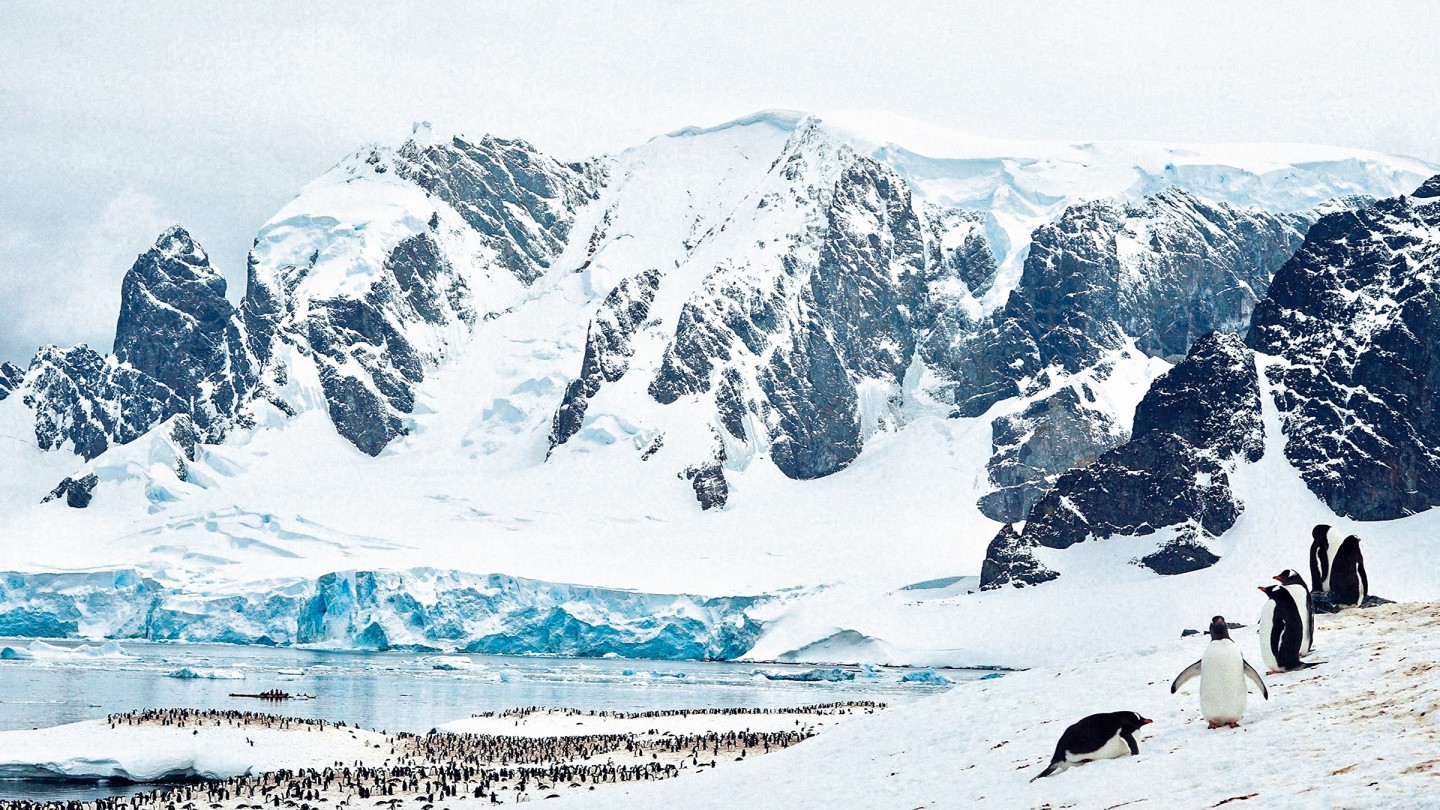
Roula Khalaf, Editor of the FT, selects her favourite stories in this weekly newsletter.
Over a chance meeting in the mountains high above Verbier, friends mention they are planning to go ski mountaineering in the Antarctic spring, on an Explorer Ship led by the polar explorer Doug Stoup. Stoup has completed more ski trips to both the North and South Poles than anyone, and I know instantly that it is something I would love to do. Living part-time in Verbier, I have been lucky enough to experience some world-class ski touring. The effort usually offers the ultimate reward of skiing virgin powder in almost total isolation, with no one in sight apart from the occasional Alpine ibex or Chamois mountain goat watching from their rocky outpost, a golden eagle or two and, just once, a wolf. The feeling of being at one with the majesty of nature in all its forms is one of life’s great privileges.
Months of preparation follow – countless Peloton rides, two-hour hikes wearing a 15kg weight vest, endless stretch-and-weights sessions – before I am finally packing my kit for this epic adventure. Ice axe (tick), crampons (tick), couteaux (tick). Safety harness, carabiners, skis, skins, poles and touring boots, tick. Backpack, shovel, probe, avalanche transceiver, CamelBak, energy gels. Technical mountain kit: base layers, merino, down and Gore-Tex, and my very techie carbon knee braces – thanks to various previous skiing accidents. It all leaves very little room for my favourite cashmere for onboard luxury. But hey-ho, that can greet me on my return; for now it’s all about survival.
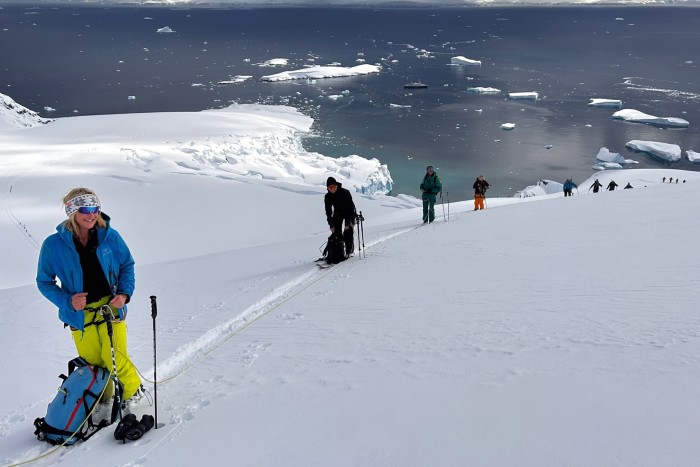
First stop is Buenos Aires, then on to the southernmost tip of Argentina, the outpost town of Ushuaia, where we spend a couple of days acclimatising. On a tour to the Martial Glacier, we take a 45-minute hike up to the snow line. It’s spring in this part of the world and, as we are repeatedly reminded by the taxi drivers, the season is over but the days are long at this time of year.
The next few days are spent in much the same way – early starts and long hikes. The winds pick up towards the top, gusting around 40 knots: a precursor of the possible conditions on the seventh continent. But the views down to Ushuaia and the Beagle Channel are spectacular, and it’s good to let my skis run despite the cruddy spring snow.
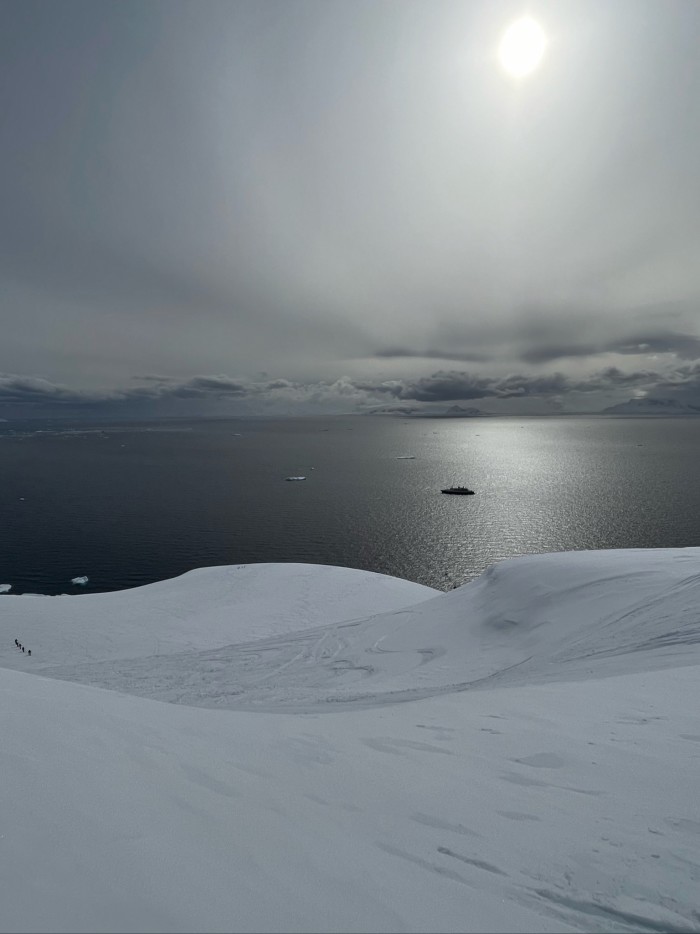
On day four we are introduced to our floating base, the polar-exploration vessel Ocean Adventurer, settling into the cabins that will be our home for the next 11 days. Ours is perfectly comfortable and spacious, positioned centrally overlooking the stern of the boat. For the next 48 hours we head south across the notorious Drake Passage, the body of water between South America’s Cape Horn, Chile and the South Shetland islands of Antarctica, which is considered one of the most treacherous voyages for ships to make. Unbuffered by land at this latitude, waves can top 40ft – it is known as “the most powerful convergence of seas”. Despite being a keen sailor and never having been seasick in my life, I am cajoled into taking preventative medicine by the ship’s doctor (a tactic successfully employed with most guests, and probably for their ultimate benefit). Suffice to say, thanks to a combination of the meds and the ship surfing the 40ft swells, I sleep on and off for the best part of 24 hours aided by an uncommon lack of connectivity to the outside world – a luxury in itself.
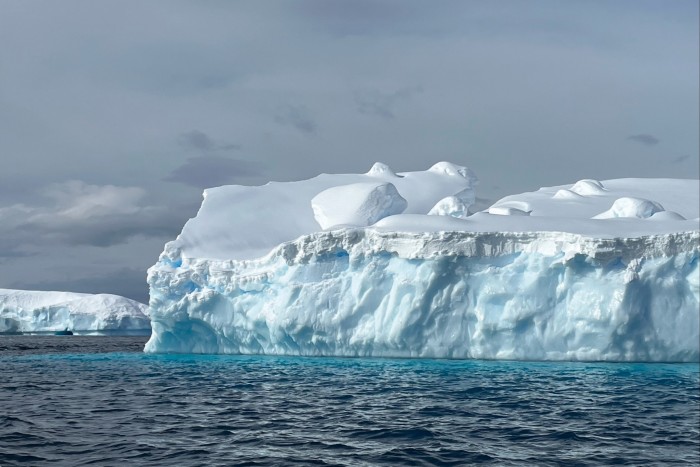
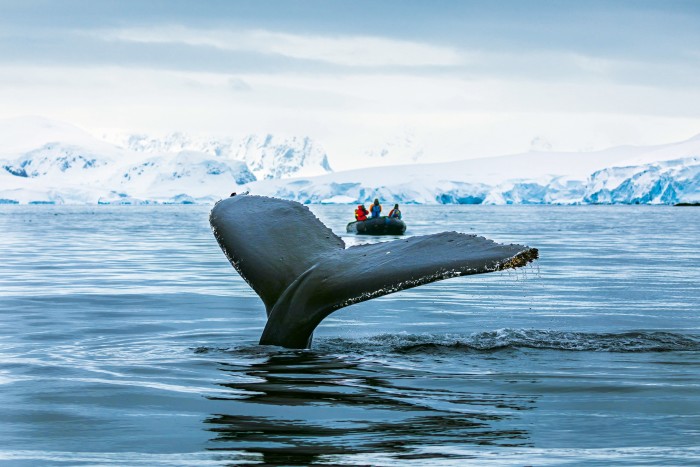
During the Drake Passage crossing, there are numerous lectures by the expedition team on Antarctica, its discovery (1820), the South Pole (which took another 100 years to reach) and the land mass (58 times that of the British Isles), of which less than one per cent is ice-free. It is the coldest, driest, windiest and highest continent on earth. We are also told about the wildlife we can expect to see: the wandering albatross (with its 11ft wingspan), several of which are accompanying us on our journey south; seals (Weddell, fur, leopard); whales – humpback, blue, fin and possibly orcas; and, most endearingly, the penguins – Adélie, chinstrap and my favourite, gentoo. With the focus on ski mountaineering, we will not have time to venture far enough south to see the emperors (but a great excuse to return).
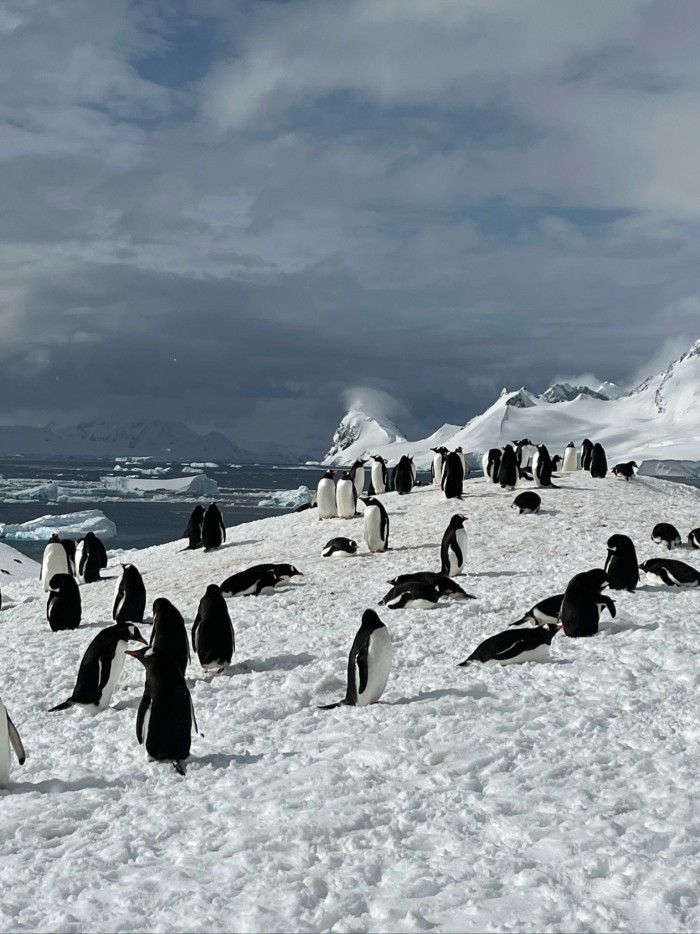
Finally the focus turns to what we are doing here: the mountains. Getting more than 100 ski mountaineers accompanied by 26 ski guides safely ashore at different landing spots every day takes some doing. At 6am, a team of scouts – comprising six of the guides, with the highly skilled Zodiac operators and an expedition team – is dispatched to identify the best two to three landings for the day. It sounds simple, but with the brash ice and icebergs permanently on the move and the unpredictable weather of the Antarctic (it’s not uncommon to experience extreme changes in short order, from sun to thick cloud to extreme winds and virtually zero visibility), not to mention the tidal variation, the landing sites have to take into account not only accessibility to the shore for the mountaineers in full ski kit from the Zodiacs, but also from the shore onto the base of the mountain. Often the scouts have to cut a snow ladder from the water line to a place where the mountaineers can click into their skis and commence their ascent. Once a landing site is established, it’s kitted out with plastic barrels containing survival kit for up to 30 people, should they be marooned on shore. These include thermal blankets, sleeping bags, fire-making kit and provisions.
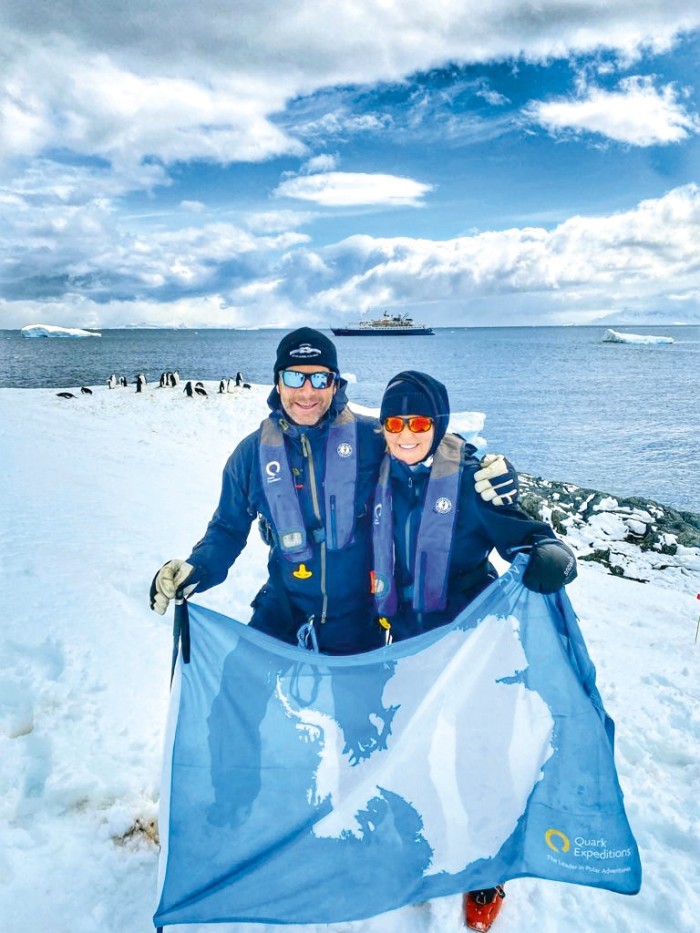
Back on board, it’s a 6.45am wake-up call, 7am breakfast and the first two teams depart at 8am, after a final disinfectant boot dip on the way off the ship (there is unanimous reverence for this spectacular and unspoilt environment).
Three days into the voyage, we wake up in Charlotte Bay near Bluff Island on the continent of Antarctica. It is quite simply breathtaking. I want to bank it deep in my memory, this place I have long dreamt of visiting. There is an air of awe and anticipation as we head out.
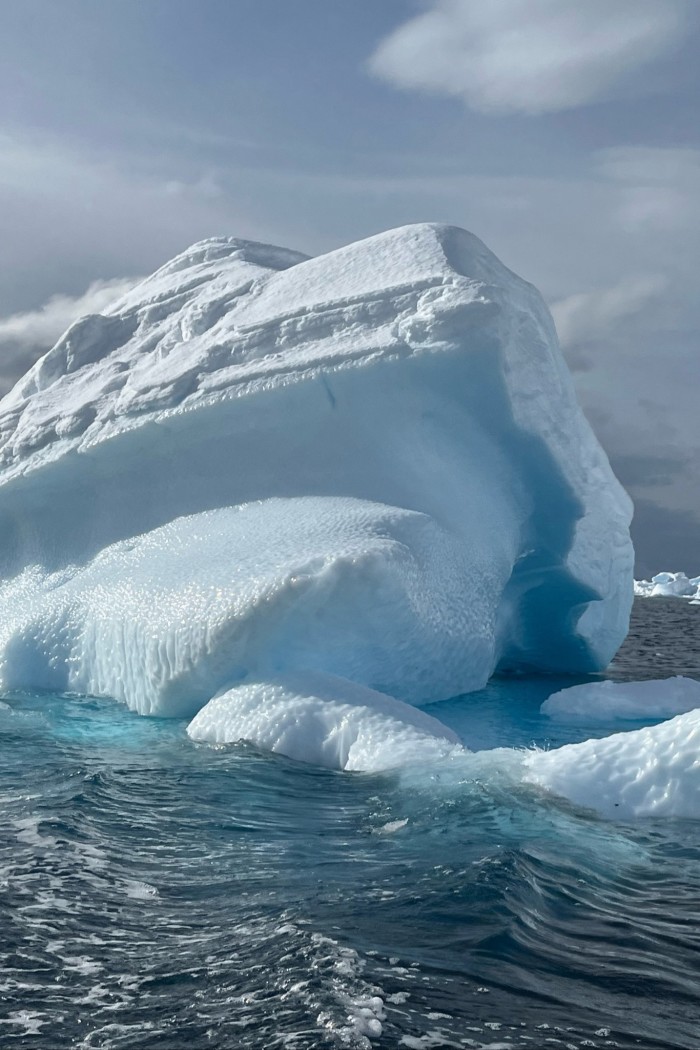
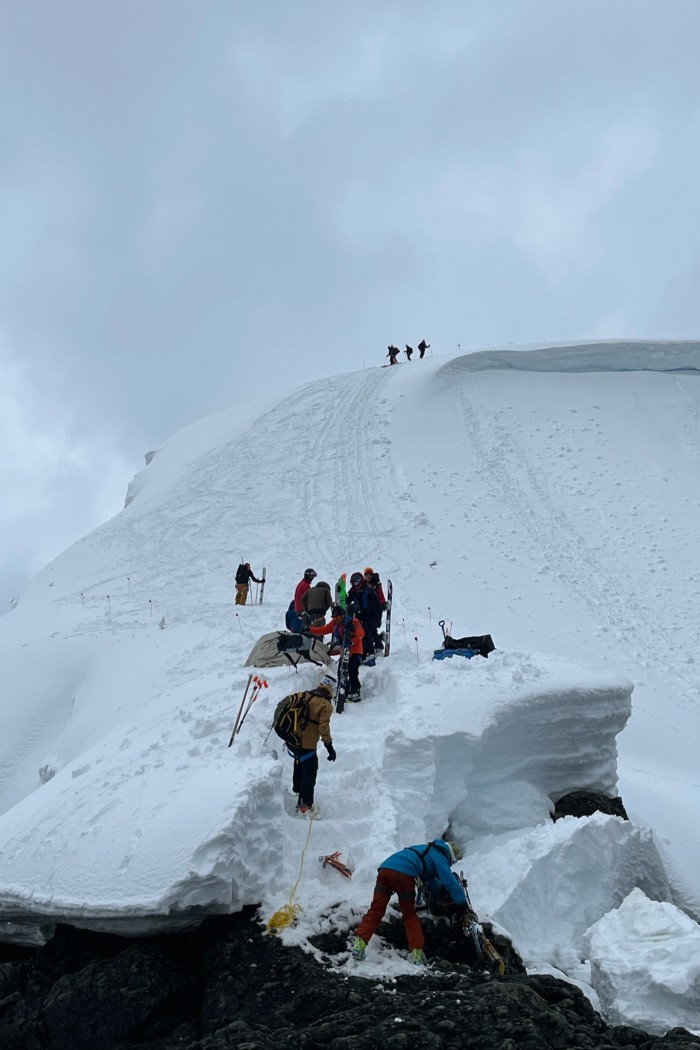
Our group is led by the seasoned ski guide Hans Solmssen from Verbier and Mike Wachs from Jackson Hole, Wyoming. As most of the terrain is on or near glaciers, everyone is roped to a guide as the risk of dropping into a crevasse is high. This is quietly reassuring – we are all very connected, skinning in unison with a gentle tension on the rope between us, zig-zagging up the glaciers and cutting fresh tracks among the often visible crevasses. The reward is a 360-degree view from the top of the mountain looking over uncharted territory, and then a descent on varied terrain that has never been skied over (it is said that more people have summited Everest than have ski-mountaineered on Antarctica). Taking the first step onto the granite stones of Charlotte Bay, I am struck by the possibility that I may be the first human to have ever touched this particular stone; I’ve never felt so at one with the terrain. We are also blessed with fresh snow, and lots of it. We expected spring skiing but with up to two feet of fresh powder, the gleeful descents make all the climbing worth it.
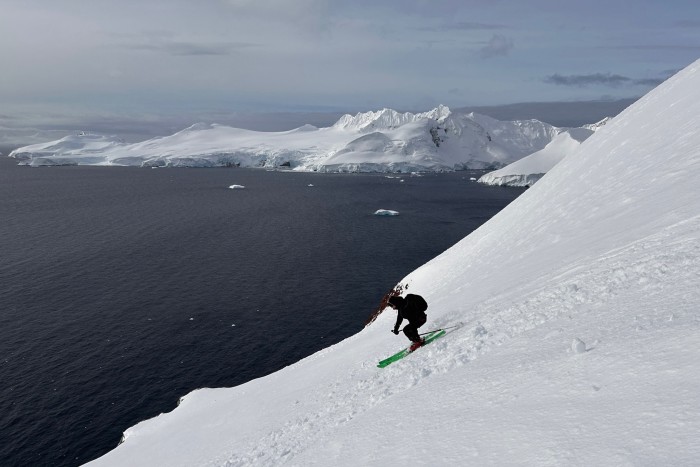
On later days we adventure to Paradise Harbour and Waterboat Point, where we are invited to view the spectacular transit of the Lemaire Channel, just 5,250ft wide at its narrowest point and nicknamed “Kodak Gap”. It is beautifully photogenic, with sweeping majestic glaciers falling directly into the sea and mountains towering steeply out of the channel; we were lucky enough to transit without being stopped by ice congestion. As we pull out of the channel, we are joined by a pair of humpback whales gently accompanying us until they eventually flip their giant tails and dive. There is positive data around whale populations here. Indeed, not only are their numbers believed to be slowly recovering, the wildlife in general appears resilient, with the populations of some penguin species increasing; and we are told that the hole in the ozone layer is expected to heal by 2066. The need to protect the environment is continually reinforced, and the palpable sense that it is making a difference in this most delicate of biospheres is a boon to our party of ecologically conscious skiers.
At Georges Point, off Rongé Island, we spend the morning climbing Mount Britannia (3,800ft). The light is truly mesmeric, with a depth of field and clarity that is hard to describe. When we return to the ship, we are invited to take the Polar Plunge – the sea temperature, at -2ºC, is more than bracing.
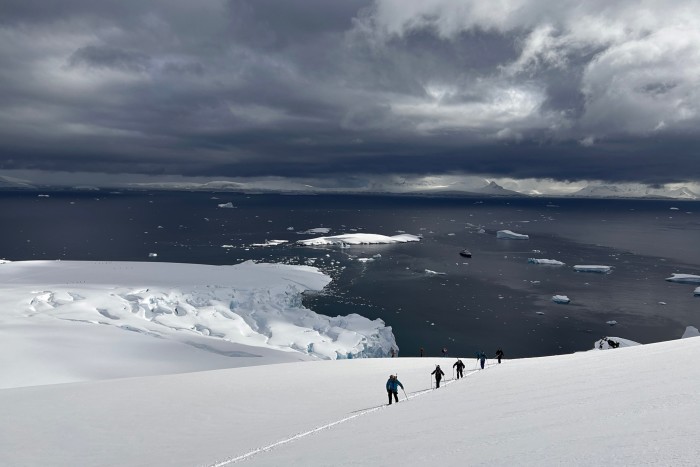
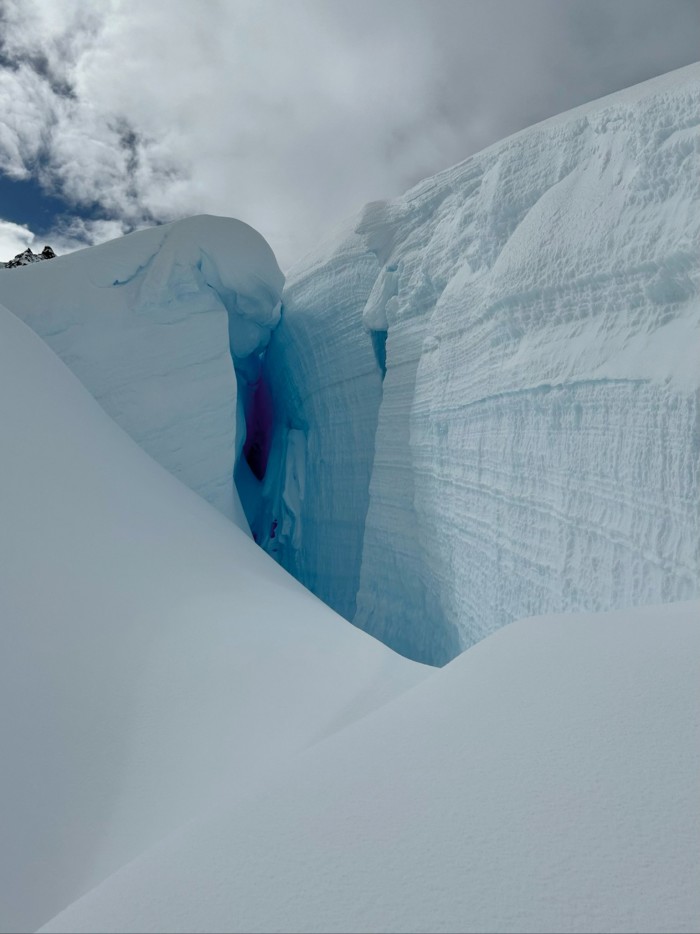
One afternoon, I visit a gentoo penguin colony on Cuverville Island, home to 6,500 breeding pairs. It’s a noisy, smelly place, but to be immersed among these comic, purposeful, surprised-looking little souls, completely unaware of our presence as they cruise up and down their “penguin highway”, is utter magic. Penguins were not designed for walking; the awkward waddle often transitions to tobogganing. Once in the water, though, they are powerful, graceful creatures that can catapult themselves back onto the land at high velocity – at once impressive and adorable.
My favourite day is spent on Enterprise Island and Nansen Island, which takes us through an “iceberg garden” to deposit us for our explorations. There are bays in Antarctica that act as catchment areas for icebergs, and it’s as though you are drifting through a raw sculpture installation, honed by the sun, the wind and the waves. The water is an intense turquoise and far more beautiful than I have seen anywhere else: the purest spectrum of perfect white through to aquamarine to cyan to deep turquoise and sapphire, and utterly mesmeric. It’s a sight that can never truly be captured by a photograph. As we return to the ship late in the afternoon, we are treated to the joyful sight of penguins feeding around the Zodiac, as graceful as dolphins.
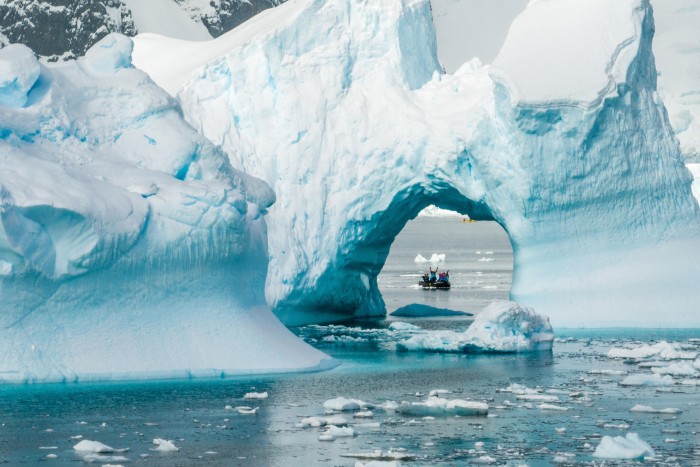
Not every day is so tranquil. On one of the last, we are treated to the full range of Antarctic weather when, on a visit to Chiriguano Bay, the wind picks up to 50 knots. When the seas become too rough to land safely, we take a detour to Livingstone Island and Half Moon Island to visit the chinstrap penguin colony and witness some sleepy fur seals. As sad as we all are not to ski, we are fully aware that this can be an unforgiving environment. And visiting Antarctica as such active participants has created memories that will last a lifetime.
On returning to London, I find myself missing this extraordinary, untouched part of the planet in an almost visceral way. Antarctica has sunk deep into my soul. I can well understand why the expedition team and the guides claim that everyone who has visited becomes a “volunteer ambassador”. You can’t help it.
Letter in response to this article:
Final frontier tourism plunges to new lows / From James Bamber, Devon, UK

Comments